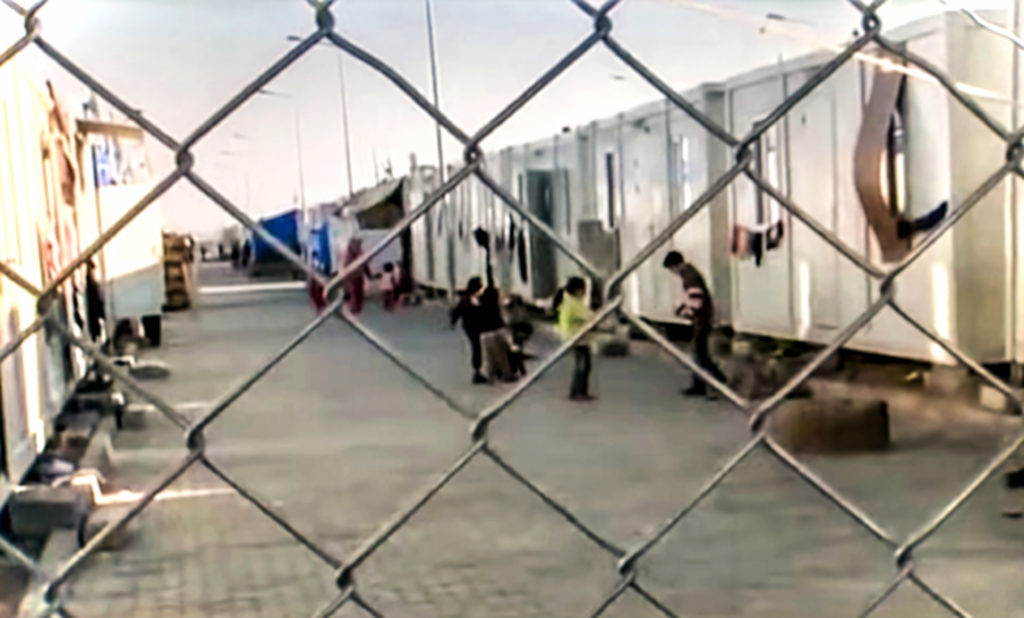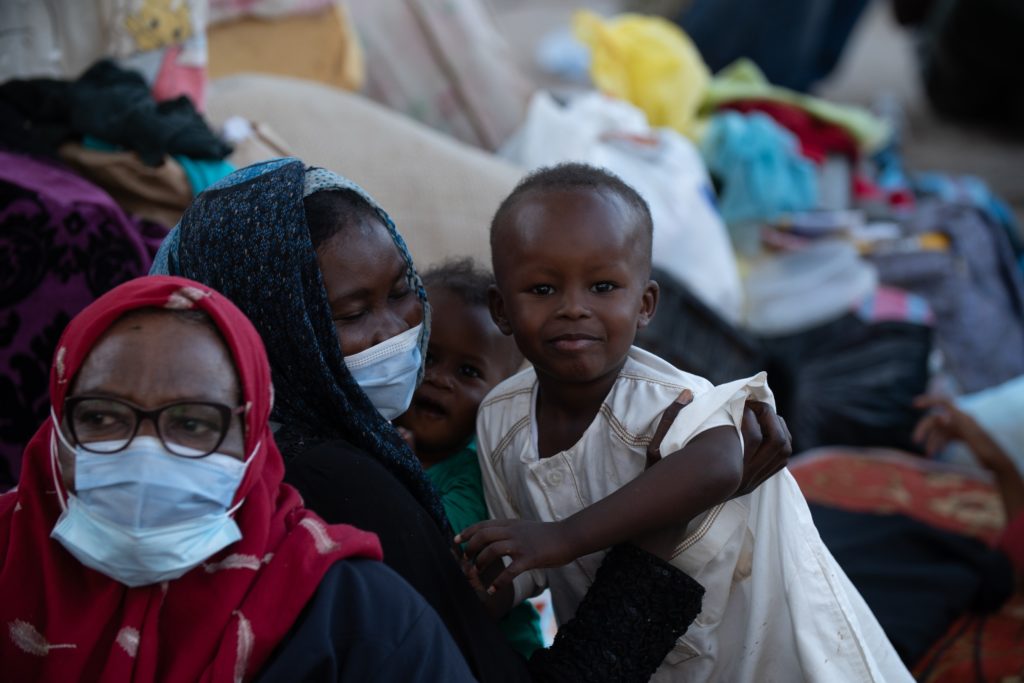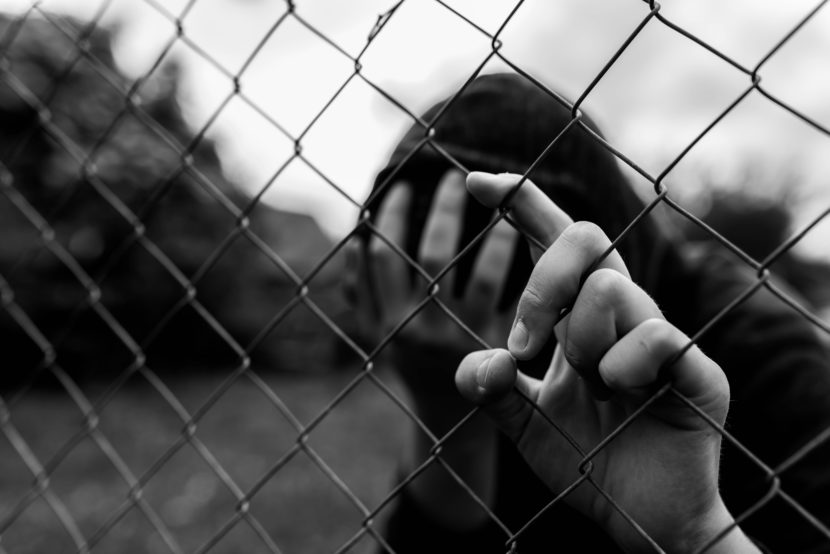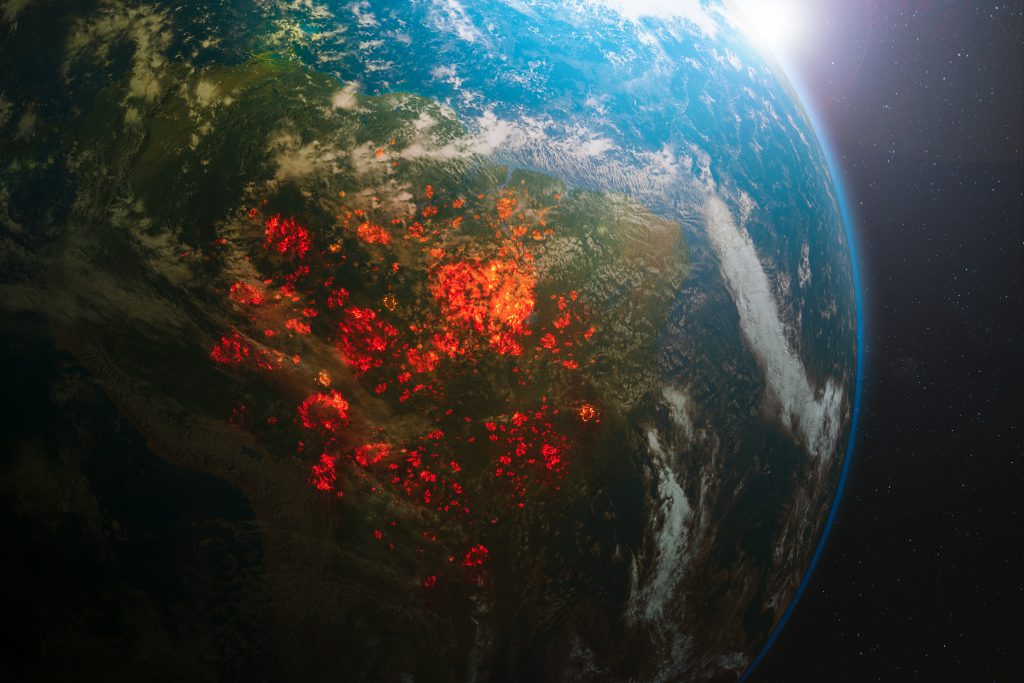On their way to Europe, countless refugees and migrant children follow migration routes across Africa. Libya is a key transit point during this journey. Yet inside Libya’s borders, the hardships remain. Reports of abuse, torture and inhuman treatment have emerged from the various detention centres where migrant children are forcibly detained. Alarming as these accounts are, what we have to fear is what has not been accounted for.
Internal displacement and migration across Africa
Over the past few years, migration policies have become more restrictive, rendering safe and regular migration routes beyond reach. People have been forced to leave their homes and have no alternative but to embark on irregular and risky cross-border movements. As time goes by, accounts of migrant deaths and disappearances have focused on the Mediterranean Sea, where there have been thousands of fatalities and innumerable disappearances along several routes involving the African continent (IOM, 2024).
Indeed, in 2024, Africa was host to 35 million internally displaced people, nearly half of the world’s total. A total of 32.5 million of these displaced people have been displaced as a result of conflict and violence, with 80% of them confined to just five countries (IDMC, 2024). Libya remains a key transit country for refugees and migrants fleeing the sub-Saharan region, with an estimated 760,000 migrants in the country as of July 2024 (USAID, 2024).
Due to the lack of safe and legal routes out of Libya, the vast majority of migrants have no alternative but to cross the Mediterranean Sea to reach safety. According to many survivors, they have made repeated attempts to cross “what is considered to be the world’s deadliest migratory route, and have been detained in Libya and trapped in a cycle of violence, abuse and extortion” (Médecins Sans Frontières, 2022).
The operations and abuses of detention centres in Libya
There are 34 known detention centres in Libya, of which three are located in the Libyan desert. Most are operated by the government’s Department of Combating Settlement and Illegal Immigration (BBC, 2017). However, there are also reports that armed groups are holding migrants in an undetermined number of unsanctioned detention centres. Indeed, “the route is mostly controlled by smugglers, traffickers and other people seeking to prey upon desperate children and women who are simply seeking refuge or a better life” (Aljazeera, 2017).
Libya has not signed the UN Convention on Refugees, although it has signed the OAU Convention on Refugees. The constitutional declaration safeguards the right to asylum in accordance with the law and stipulates that political refugees cannot be extradited. In reality, no national authorities exist in Libya to determine refugee status or to carry out such registration.
Furthermore, individuals in need of international protection do not benefit from the rights associated with asylum, which include legal residence, non-criminalisation or criminalisation of irregular entry, access to recognised documents and fundamental rights, and protection against deportation to unsafe countries. In addition, there are no specific protection regulations applicable to refugee children in Libya (Norwegian Refugee Council, 2023).
As a corollary, children do not receive any preferential treatment and are frequently placed in cells alongside adult detainees, leading to an increased risk of abuse. There have been reported cases of refugee children being neglected in detention centres and hospitals (Aljazeera, 2017). Migrant and refugee children in Libya therefore face daily grave violations of their rights, which includes arbitrary detention, abuse, extortion, being held against their will in inhumane conditions and in overcrowded detention centres (UNICEF, 2021).
As an example, in Libya’s largest detention centre, Al Mabani, “more than 5,000 people – four times its official capacity – including 100 children and 300 women” are being detained (UNICEF, 2021). From the existing data collected, it is estimated that 99 children (49 boys and 50 girls) were arbitrarily detained in detention centres in Libya (United Nations Security Council, 2024).
Mistreatment of migrant children in Tripoli
Refugees, asylum seekers and migrants, detained in more than a dozen detention centres in Tripoli, are being “assaulted, sexually abused, beaten, killed and systematically deprived of the most basic humane conditions, including proper access to food, water, sanitation and medical care” (Médecins Sans Frontières, 2023). More specifically, the safety and well-being of thousands of women and children are jeopardised (Amnesty International, 2020; UNICEF, 2021).

Refugees and migrants are regularly being handed to militias which run unofficial detention facilities in Tripoli (Amnesty International, 2020). Children, unaccompanied minors, toddlers, infants and newborn babies are suffering due to “the arbitrary nature of their detention in inhumane conditions, where they were systematically denied sufficient access to food, water, sanitation, exercise, medical care and basic items such as blankets, clothes, diapers or sanitary pads. They were also detained without either procedural safeguards or legal counsel” (Médecins Sans Frontières, 2023).
The European Union’s role and the impact of the new Migration Pact
Migrants and asylum seekers are continuing their attempts to reach Europe from Libya (Human Rights Watch, 2025). The EU’s reaction to these occurrences is to stem the tide of migration. Driven by a determination to curb arrivals by any means necessary, the EU Member States provided support to Libya in an attempt to circumvent international laws prohibiting refoulement and thereby circumventing human rights guarantees (Amnesty International, 2020).
As such, the European governments handed over responsibility to Libya, to oversee rescue operations in a large area of the Mediterranean Sea, as opposed to securing a committed search and rescue response in the central Mediterranean, resulting in an estimated 1,553 people dying in the attempt to cross in 2021 alone (Médecins Sans Frontières, 2022).
According to the new Migration Pact, individuals arriving irregularly, even those disembarked after being rescued at sea, will be held in detention and directed towards substandard accelerated asylum procedures, stripping away the safeguards available in a standard procedure, such as legal assistance and children as young as six years old will be fingerprinted.
These new rules on migration introduced by the Pact entered into force on 11 June 2024 and will enter into application by 2026 (European Commission, 2024). Notably, one method used is to shift the responsibility to neighbouring countries such as Libya, Tunisia, Turkey, and Egypt, thus cementing a total disregard for the rights of people on the move (Human Rights Watch, 2023).
Ensuring safeguards for migrant children’s journeys
Given that migrant children most specifically are facing heightened risks of protection violations, for instance, arbitrary detention, forced labour, restricted freedom of movement and sexual violence, there is a pressing need to provide protection assistance, safe and legal pathways and safeguards to protect migrating children in order to keep them safe and ensure that they don’t fall into predators’ bait (Aljazeera, 2017; USAID, 2024).
Across Africa, displacement has become increasingly protracted and a large number of displaced persons are becoming highly reliant on humanitarian aid (IOM, 2024). As a durable solution, it is “imperative that prompt and effective assistance is provided to all migrants and refugees in distress at sea, including through adequate State-led maritime patrols and by supporting search and rescue operations by private commercial or humanitarian vessels, allowing swift disembarkation at a port of safety” (IOM, 2024). It is also essential to provide targeted and specific support for migrant children, such as funding for mental health, medical aid, education and legal aid for children detained illegally.
In addition, the human rights of refugees and migrants, along with the protection of children and victims from violence, particularly sexual violence, must be safeguarded at all stages of their journey (United Nations Security Council, 2024). In order to achieve such comprehensive protection for refugees and migrant children, Libyan authorities must sign the UN Refugee Convention and thereon establish a system for refugee protection.
Furthermore, the State must ensure that Libyan detention centres are in conformity with international law, particularly the human rights of children; are subject to independent inspections and that violations are reported transparently. This monitoring and reporting should be supplemented by the work undertaken internationally by the various EU offices, UN agencies and NGOs operating in the field, in order to more effectively safeguard migrants’ rights, conduct independent investigations or fund humanitarian aid, supported by consolidated data collection and analysis.

Humanium, as a child-right organisation which has conducted numerous projects worldwide, remains committed to safeguarding children’s rights to life, protection, and health. If you want to contribute to Humanium’s specific causes to improve children’s lives, please consider making a donation, volunteering or becoming a member.
Written by Moïra Phuöng Van de Poël
Bibliography:
Aljazeera (2017, February 28). Refugee child abuse rampant in Libya: UNICEF. Retrieved from Aljazeera at https://www.aljazeera.com/news/2017/2/28/refugee-child-abuse-rampant-in-libya-unicef, accessed in January 2025.
Amnesty International (2020). Between life and death’: Refugees and migrants trapped in Libya’s cycle of abuse. Retrieved from Amnesty International at https://www.amnesty.org/en/documents/mde19/3084/2020/en/, accessed in January 2025.
Amnesty International (2020). Libya: New evidence shows refugees and migrants trapped in horrific cycle of abuses. Retrieved from Amnesty International at https://www.amnesty.org/en/latest/press-release/2020/09/libya-new-evidence-shows-refugees-and-migrants-trapped-in-horrific-cycle-of-abuses/, accessed in January 2025.
BBC (2017, February 28). Libya exposed as an epicentre for migrant child abuse. Retrieved from BBC at https://www.bbc.com/news/world-africa-39109585, accessed in January 2025.
European Commission (2024, May 21). Pact on Migration and Asylum. Retrieved from European Commission at https://home-affairs.ec.europa.eu/policies/migration-and-asylum/pact-migration-and-asylum_en, accessed in January 2025.
Human Rights Watch (2023, December 21). EU’s Migration Pact is a Disaster for Migrants and Asylum Seekers. Retrieved from Human Rights Watch at https://www.hrw.org/news/2023/12/21/eus-migration-pact-disaster-migrants-and-asylum-seekers, accessed in January 2025.
Human Rights Watch (2025, January). World Report – Libya, events of 2024. Retrieved from Human Rights Watch at https://www.hrw.org/world-report/2025/country-chapters/libya, accessed in January 2025.
IDMC (2024, November 26). Internal Displacement in Africa: An overview of trends and developments (2009-2023). Retrieved from IDMC at https://reliefweb.int/report/sudan/internal-displacement-africa-overview-trends-and-developments-2009-2023, accessed in January 2025.
IOM (2024). Africa Migration Report (Second edition). Connecting the threads: Linking policy, practice and the welfare of the African migrant. Retrieved from IOM at https://reliefweb.int/report/world/africa-migration-report-second-edition–connecting-threads-linking-policy-practice-and-welfare-african-migrant#:~:text=Contrary%20to%20other%20parts%20of,increased%20by%2053%20per%20cent, accessed in January 2025.
Médecins Sans Frontières (2023, December 6). Briefing Note: “You’re going to die here” – Abuse in Abu Salim and Ain Zara detention centres. Retrieved from Médecins Sans Frontières at https://reliefweb.int/report/libya/briefing-note-youre-going-die-here-abuse-abu-salim-and-ain-zara-detention-centres-enar, accessed in January 2025.
Médecins Sans Frontières (2022, February 2). Italy-Libya agreement: Five years of EU-sponsored abuse in Libya and the central Mediterranean. Retrieved from Médecins Sans Frontières at https://www.msf.org/italy-libya-agreement-five-years-eu-sponsored-abuse-libya-and-central-mediterranean, accessed in January 2025.
Médecins Sans Frontières (2023, December 6). People are beaten, sexually abused and killed in Libyan detention centres. Retrieved from Médecins Sans Frontières at https://www.msf.org/people-are-beaten-sexually-abused-and-killed-libyan-detention-centres, accessed in January 2025.
Norwegian Refugee Council (2023, March). Legal Guide to Child’s Rights in Libya. Retrieved from Norwegian Refugee Council at https://www.nrc.no/globalassets/pdf/guidelines/legal-protection-of-children/legal-guide-to-childs-rights-in-libya-english.pdf, accessed in January 2025.
UNICEF (2021, October 12). The safety and wellbeing of children at high risk in detention centres in Libya. Retrieved from UNICEF at https://www.unicef.org/press-releases/safety-and-wellbeing-children-high-risk-detention-centres-libya, accessed in January 2025.
United Nations Security Council (2024, August 30). Implementation of Security Council resolution 2698 (2023) – Report of the Secretary-General. Retrieved from United Nations Security Council at https://documents.un.org/doc/undoc/gen/n24/246/70/pdf/n2424670.pdf, accessed in January 2025.
USAID (2024, November 15). Libya Assistance Overview – November 2024. Retrieved from USAID at https://reliefweb.int/report/libya/libya-assistance-overview-november-2024, accessed in January 2025.


